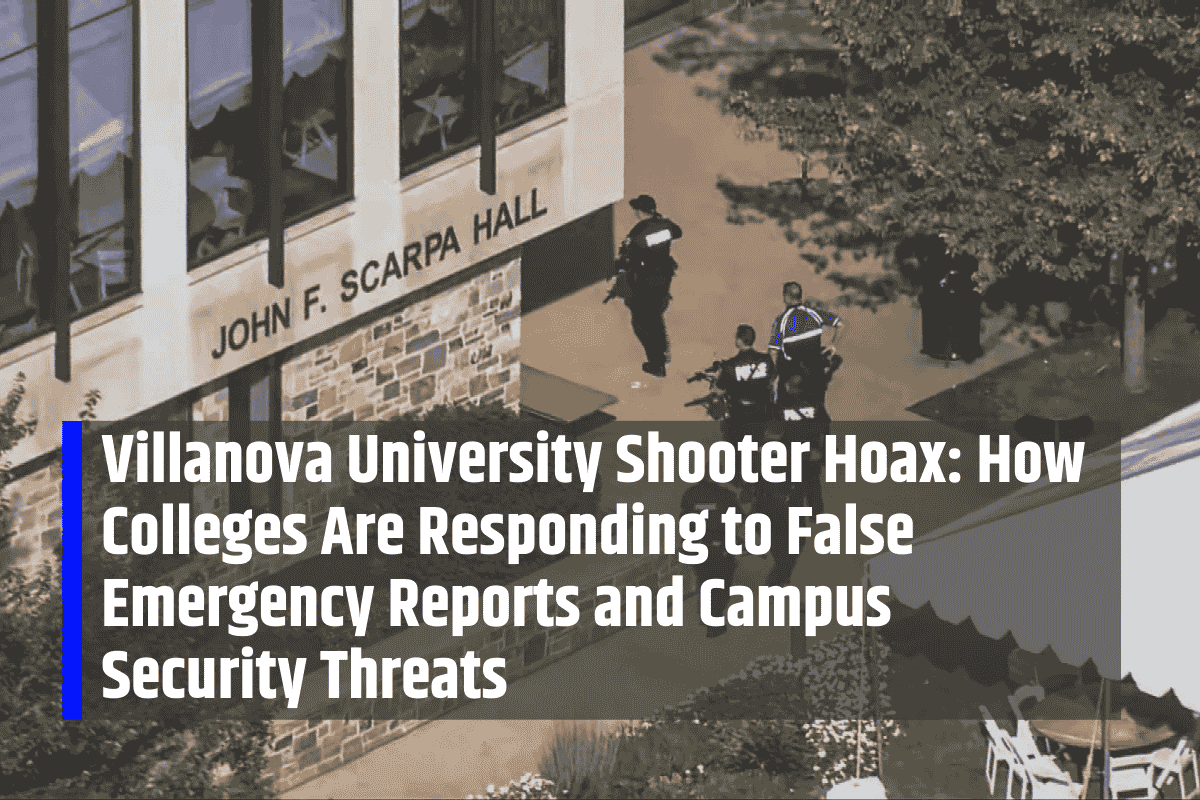In late August, Villanova University was thrust into panic when an active-shooter alert spread across campus. Students and families attending orientation events were told to shelter and barricade. Within an hour, relief replaced terror: there was no shooter, no weapon, and no injuries. The crisis was a malicious hoax.
What Triggered the Alarm
The scare began when a 911 call falsely claimed a shooting at Scarpa Hall, home to Villanova’s law school. Police and emergency crews swarmed campus while students hid in classrooms, closets, and dorms. An outdoor Mass with parents and students turned chaotic as confusion spread, tarnishing what was meant to be a celebratory day.
The Toll Beyond Physical Safety
Though no lives were lost, the incident left deep emotional scars. For incoming freshmen, the first days of college—normally filled with excitement—were instead marked by fear. Parents, already anxious about their children’s transition, were confronted with the horrifying possibility of violence before learning the threat was unfounded.
Swatting on the Rise Nationwide
Villanova’s ordeal was not isolated. Across the country, swatting—false emergency calls designed to provoke armed responses—has become disturbingly common. Hours earlier, a Tennessee university experienced a similar hoax. Increasingly, these incidents target moments of high visibility such as orientation events or public gatherings, amplifying chaos and disrupting campus communities.
Institutional Responses to Hoaxes
Universities are adapting. Many are refining emergency protocols and training safety teams to respond quickly, whether threats are real or fabricated. Institutions are also investing in layered communication—mass texts, emails, social media posts, and web portals—to keep information accurate, reduce rumors, and reassure families even in uncertain moments.
Legal and Disciplinary Measures
In states with laws clearly criminalizing false threats, such as Texas, colleges are partnering with law enforcement to prosecute swatting cases aggressively. Officials hope strong consequences will deter perpetrators. Yet leaders acknowledge that beyond punishment, building trust requires transparency—sharing timely, accurate updates without fueling unnecessary panic.
Balancing Safety and Well-Being
For administrators, the challenge is delicate. Acting decisively can save lives, but false alarms risk undermining trust. Universities are working to balance urgency with clarity, while also supporting mental health. Counseling, community meetings, and open forums help students and families process fear, ensuring recovery does not end with the “all clear.”
Hoaxes Prompt Real Improvements
Ironically, false alarms often highlight weaknesses in safety systems. After incidents like Villanova’s, universities re-examine security infrastructure, improve communication technologies, and run more simulations. These exercises train students and staff to respond effectively—whether facing an actual threat or a fabricated emergency—ultimately strengthening campus readiness.
Building Resilient Campus Cultures
Looking forward, institutions are embedding safety education into orientation programs, encouraging vigilance without paranoia. Digital literacy is emphasized so students can identify misinformation that spreads during crises. Administrators are also calling for stronger federal support, including clearer guidelines under the Clery Act and funding for advanced campus alert systems.
Lessons From Villanova
Villanova’s swatting scare ended without harm, but it underscored the fragility of trust and the urgency of preparation. In an age where digital manipulation can ignite chaos, colleges must pair robust security with compassionate care. Safety is not only about protocols—it is also about restoring community confidence when trust is shaken.
From Chaos to Clarity
The Villanova hoax was a chilling reminder of how quickly fear can spread on campuses. Though no shots were fired, the emotional impact was real. By refining communication, enhancing security, and fostering resilience, colleges can transform moments of terror into opportunities for stronger, safer, and more compassionate communities.





Leave a Comment